You've seen it countless times—your cats, usually content in their separate corners, come together to groom each other.
One reaches out a paw, brushing it softly over the other's fur, before they engage in a mutual, gentle grooming session.
A comforting sight, isn't it? But have you ever paused to wonder why they engage in this behavior?
Why do creatures known for their independent nature share such a personal moment?
"Why do cats groom each other?" is an excellent question that has more than one possible answer. We went on a research adventure, seeking actual scientific studies that looked into the question.
The reason behind this feline ritual is more complex than it seems, and it might surprise you.
Today we bring you some fascinating science-based answers! Read on to become more brilliant cat owners. Because understanding what makes our cats tick helps us make sure they're healthy and happy!
Feline Grooming: Hygiene, Social Bonding, or Aggression?
At first glance, the reasons behind cats grooming each other appear to revolve around hygiene, social bonding, and surprisingly, aggression.
These motives are the key to unlocking the riddle we're discussing today. But before we delve into the intricacies, let's define a few terms to set the foundation for our discussion.
Allogrooming: The Science of Social Grooming
In feline parlance, grooming refers to the act of a cat licking its coat, commonly known as washing or cleaning.
When a cat extends this behavior to a companion—be it another cat, a dog, or even a human—it's called Allogrooming, a scientific term for social grooming.
Allogrooming can be reciprocal, where both creatures participate in grooming each other.
Interesting, isn't it? But cats aren't the only ones who engage in this social activity.
Bees, birds, horses, bats, monkeys, and even humans partake in Allogrooming, highlighting its universal nature across species.
Social Grooming: Not Just A Feline Fad!
Cats lick their own coat. This action is often termed as grooming, washing, or simply licking their fur.
But it's not just limited to self-grooming. Cats also extend this behavior to others around them.
They may groom another cat, a dog, any other animal, or even you!
When grooming, cats often move on to lick whoever is next to them. This is often another cat, but it could also be a dog or any other animal. It could also be you - the human!
Now let's talk about Allogrooming.
Allogrooming is a social grooming act. It signifies an individual of a species grooming another for social reasons. This act may be mutual, where both parties groom each other reciprocally.
You might be wondering:
Which other species engage in social grooming?
Lots and lots of species! Did you know that even bees groom each other?
Mutual Grooming: More Common Than You Think!
Birds groom each other. Mammals do it too. Horses, bats, monkeys, you name it! They all take part in allogrooming every now and then.
Don't forget humans! We engage in grooming behaviors too.
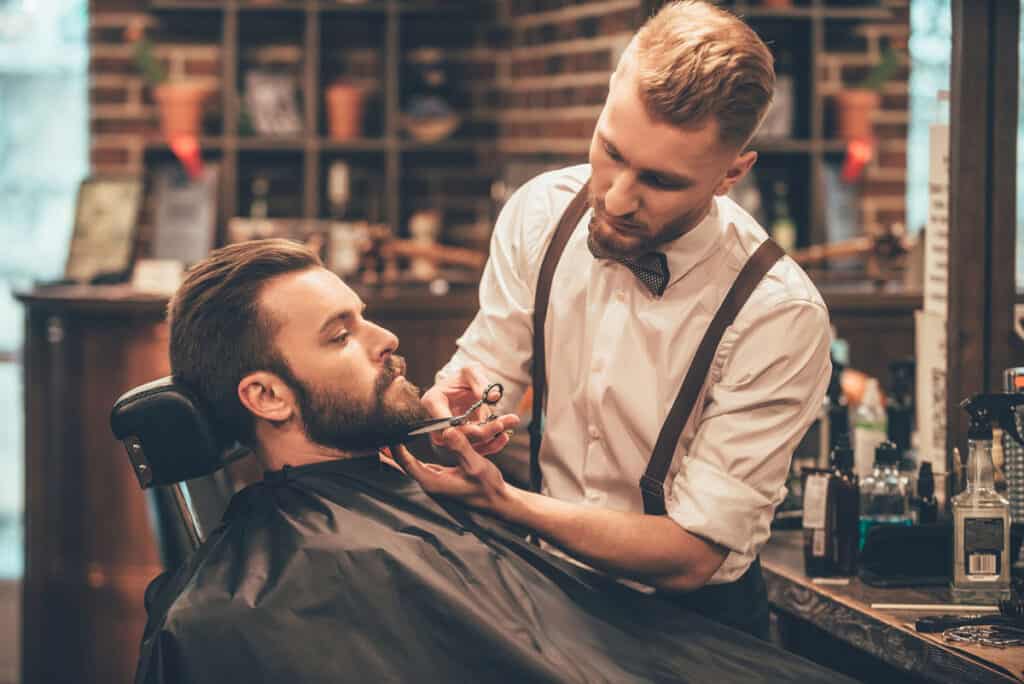
So, let's circle back to our feline friends:
Both large and small, felines are renowned for their cleanliness and attention to personal hygiene. Mutual grooming is a common practice among them, given they are in a social setting.
Interestingly, even solitary big cats get in on the grooming act. Even though they are often loners, they do partake in social grooming during their brief periods of positive social interactions.
But what about domestic cats?
If you own more than one cat, there's a good chance that you witness mutual grooming quite often. It really is sweet to behold, isn't it?
You might be wondering:
"But my cats don't groom each other! Is there something wrong with them?"
Nope. Not all cats that live together will groom each other. Why? Well, let's look at why cats groom each other and try to figure out the answer.
Finally, let's look at the possible reasons for actual mutual grooming, or allogrooming.
We're going to discuss origins: your cat's first experience of social grooming. Then go over the three explanations of social grooming in adult cats:
- Hygiene
- Social bonding
- Aggression
(Yes, aggression! Sounds strange but we have the science to back it up!)
Feline Birth and the Importance of Motherly Grooming
Your cat's first experience with social grooming
Where does this act of social grooming come from? What are its origins? Grooming interactions between cats can be traced back to a mother cat’s instinct to groom her kittens.
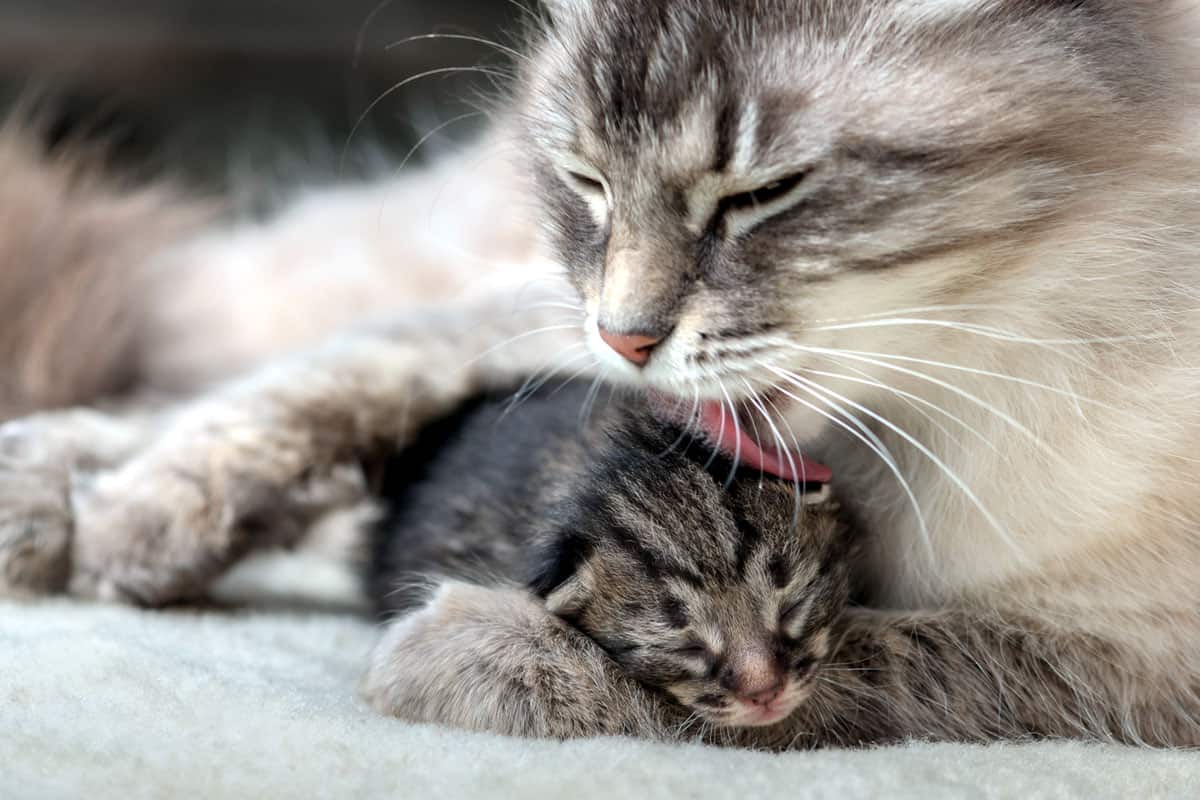
If you've witnessed a cat giving birth, you've seen the intensive licking the mother cat provides to her newborn kittens. This process begins as soon as each kitten is born, even as others continue to arrive.
The mother cat licks away the blood, placentas, and other secretions.
Sounds unpleasant? For us humans, maybe.
But it's quite normal in nature and many female mammals do the same.
Why is this?
Consuming the birth material gives her crucial nutrients. This is important as she likely won't hunt for a few days.
This ritual also serves to clean her kittens. Dead body tissue residues can rot, risking infection from bacteria. Any remaining material may stink, alerting potential predators to the kittens.
The act of licking stimulates the kittens to excrete waste. Without this stimulation, kittens may become constipated. That's why caregivers of orphaned kittens must massage these areas gently.
Lastly, and crucial to this discussion, this is how the mother cat forms bonds with her kittens. The kittens feel their mother's tongue and become calmer.
Now that we understand this, let's explore the three reasons why cats engage in mutual grooming.
Three Perspectives On Mutual Grooming In Cats
1. Hygienic Help or Solo Self-Care?
While self-grooming is an obviously hygienic behavior, there is actually a debate about whether that is a motivation when grooming each other as well.
After all, cats who don't share their household with other cats do just fine with self-grooming.
The head and neck are areas of the cat that cannot be easily reached.
Any cat owner has likely noticed that cats cannot lick these areas directly, but our nifty kitties have found a solution: They will wet their paws and use them to clean their heads and necks!
Could it be that the help of a feline friend has some benefits in the hygiene department?
Maybe cats appreciate having another cat help with their washing and grooming routine. It's certainly possible!
No one knows for sure, and as we said, clearly cats can take care of their grooming needs on their own, too.
SIGN UP FOR THECATSITE'S EMAIL UPDATES >
2. Grooming and Social Bonding
In 2004, the Journal of Feline Medicine and Surgery published a paper that examined how cats organize themselves socially.
Long thought to be solitary, independent creatures, research has shown that - under the right circumstances - domestic cats instead prefer to gather in social groups!
This is obvious for anyone who has encountered a feral colony near their home. The availability of a central food source clearly determines whether cats will choose to create a colony.
When food sources are more scattered and limited, cats tend to spread out more and keep to themselves.
When we keep several cats together inside our home, a similar process takes place. The cats develop social relationships including hierarchies.
They may not always get along, but they certainly recognize each other as individuals and establish a sort of "pecking order".
So, what about grooming each other?
According to the study, cats would actively seek out grooming from others they chose to more closely associate with. A cat wanting to be groomed by another would approach the target cat and flex its neck, encouraging the other cat to groom him there.
Those who were groomed without actively seeking it still cooperated, moving their heads and chins to allow further access to the groomer.
These cats would also display reactions of enjoyment, such as purring while being groomed.
This grooming was accompanied by other friendly signals such as holding the tail vertically to the ground, rubbing their tails against one another, or even curling their tails together.
In fact, cats were most likely to engage in grooming behaviors when they both expressed these friendly gestures in their interactions.
The grooming was sometimes reciprocated so that both parties took turns receiving the attention, but not always.
In 2013, another study came out supporting this explanation. This time scientists observed lions in captivity and concluded that head rubbing and licking - i.e. allogrooming - reinforced social bonds between the members of the pride.
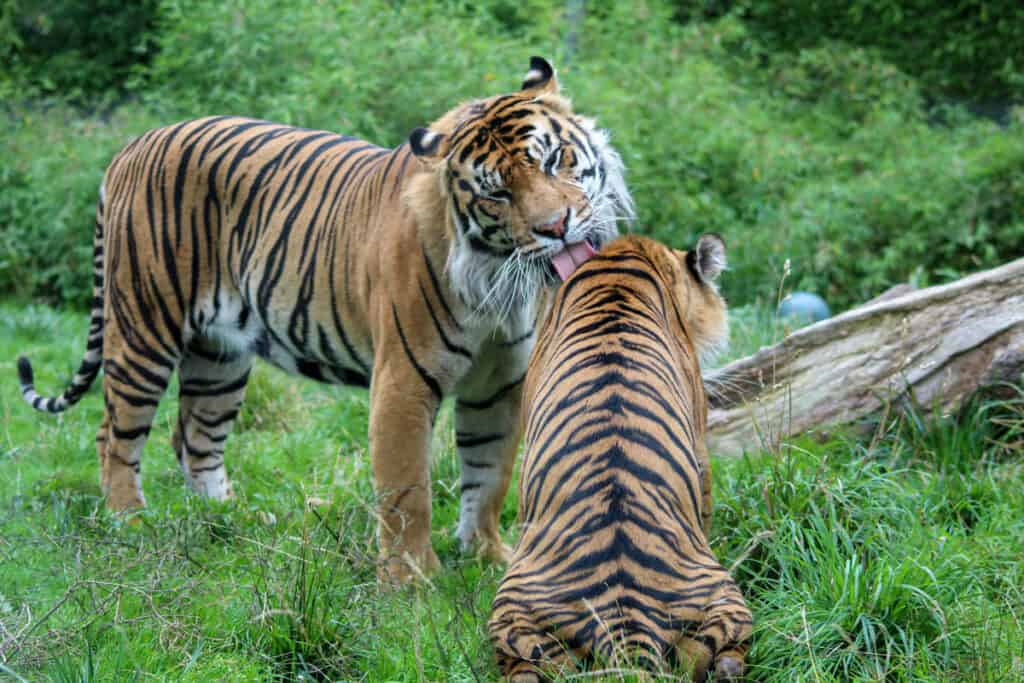
This makes sense in another way too, especially when considering those lions with their huge fangs. Heads and necks are vulnerable areas. To expose this area to another cat would seem to be a gesture of trust.
But wait:
Didn't we mention aggression and dominance as possible explanations? Well, we did, and it's time to look into that aspect of mutual grooming.
3. Subtle Power Play in Mutual Grooming
Ok, so we're not talking about direct blatant aggression, obviously. However, observe allogrooming in cats closely -
If you're very in tune with feline body language you may just be able to pick up on the tension there.
What? Aggression? But they seem to be relaxed and happy!
They are. But hear us out about the research that backs up this claim.
In 1998, a scientist by the name of Ruud van den Bos conducted a study about feline behavior that focused on allogrooming. Surprisingly, Van den Bos discovered a link between this grooming behavior and aggression.
When looking at social grooming, Van den Bos noticed that the dominant cats tended to groom the submissive cats.
He studied their body language, as well, and found that the groomer would take on a more dominant posture during the grooming, such as standing or sitting up, while the one being groomed would be lying down or crouched.
This seemed to enforce the power difference within the pair.
But wait - there's more:
In 35% of these situations, the grooming turned into a form of aggression. This aggressive behavior was, again, instigated by the more dominant of the pair.
The scientist came to the conclusion that grooming was an additional way to establish dominance in the relationship between cats.
On a gentler note, grooming could instead be a means to express affection towards a subordinate.
Either way, the behavior seems to reinforce the already established hierarchy between the grooming pair and redirect otherwise aggressive tensions between them.
Gleaning Insights From Feline Grooming Behaviors
What can we draw from this?
Understanding why cats groom each other can serve us in two ways:
1. Understanding the relationship between cats in a multi-cat household.
2. Figuring out what cats think about us petting them.
If you're a multiple cat owner:
Accept that your cats have their own social hierarchy. This order is not within your control, nor should you try to manage it.
When you see your cats grooming each other, acknowledge the possible tension. Maintain your distance and don't be shocked if grooming concludes with one cat seeming dissatisfied.
When you're petting your cat:
Remember that as much as your cat enjoys being petted, he or she also may see this act as involving some amount of indirect aggression.
Be alert to your cat's body language. If your cat stops purring, seems tense, or starts flicking its tail tip, stop petting.
Now over to you:
Do your cats groom each other? What do you think motivates them? Share your thoughts in the comments below! And, if you have any queries about cat behaviors or anything related to cats, feel free to reach out to the cat forums.
SIGN UP FOR THECATSITE'S EMAIL UPDATES >
Read More:
7 Reasons Why You Really Should Groom Your Cat Regularly
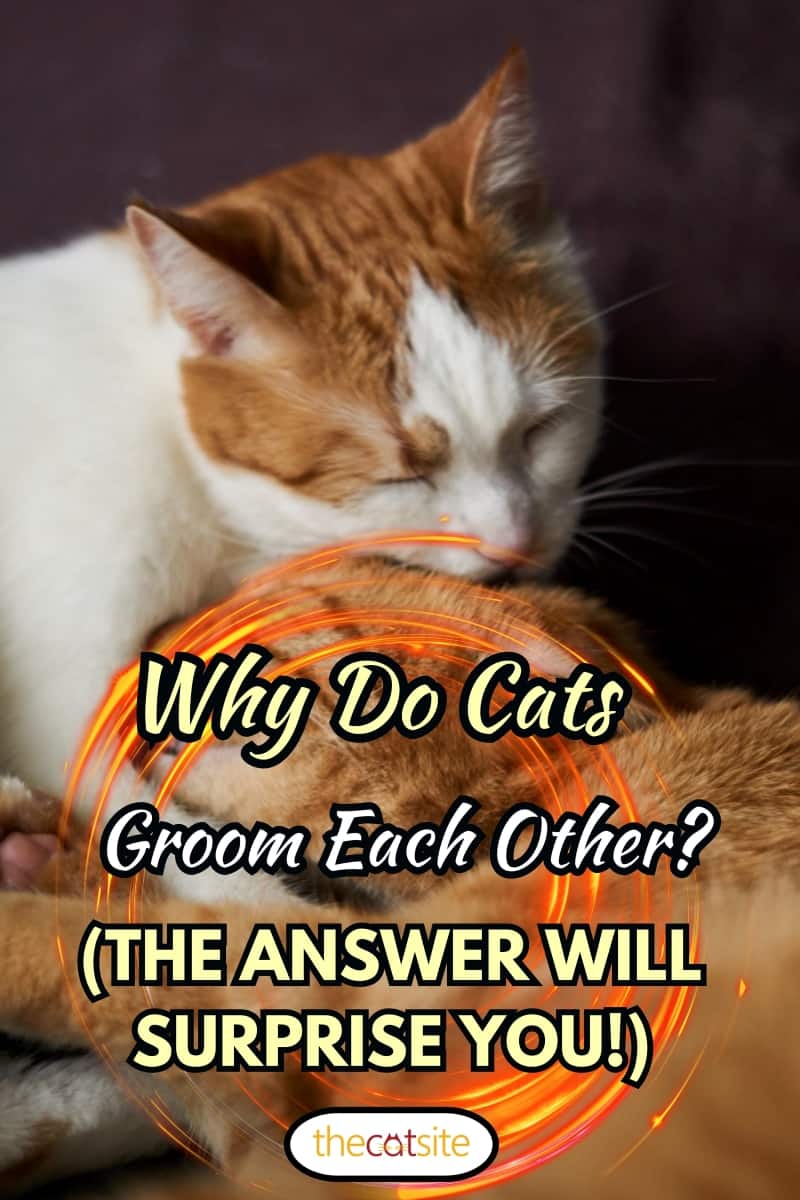
Note: We may get commissions for purchases made through links on this page.


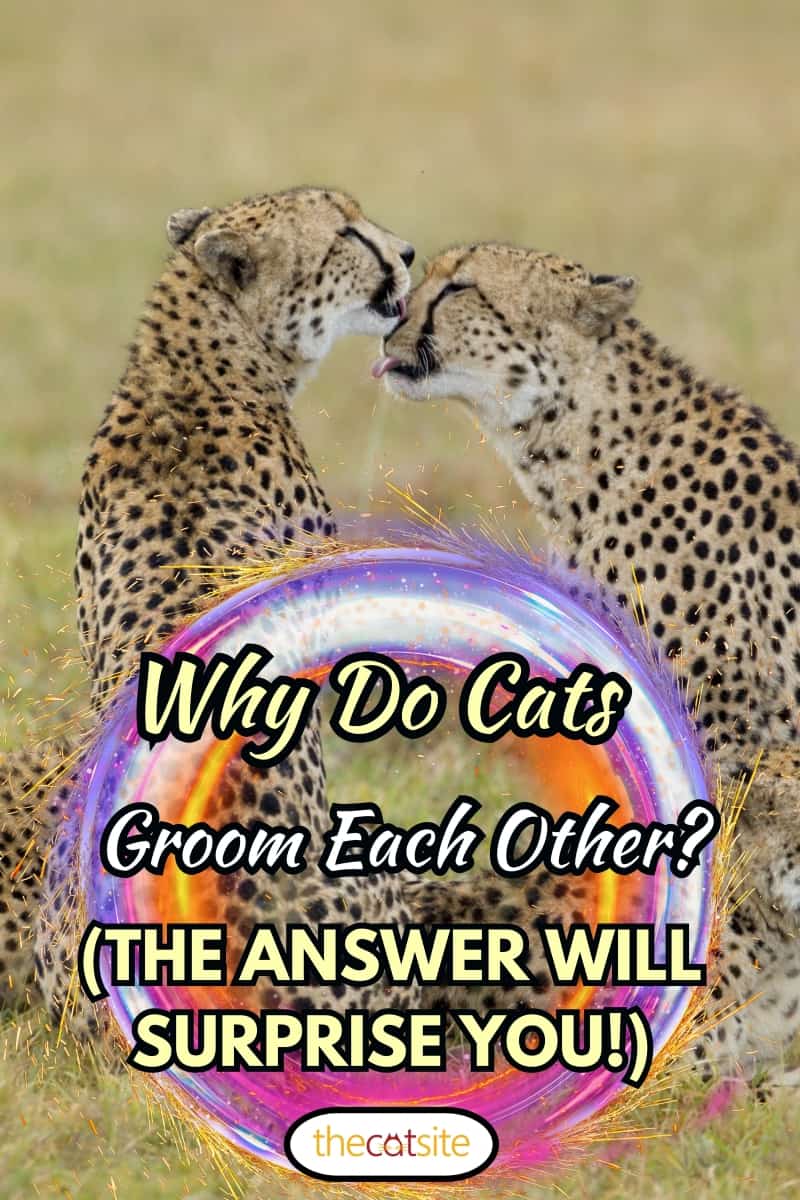
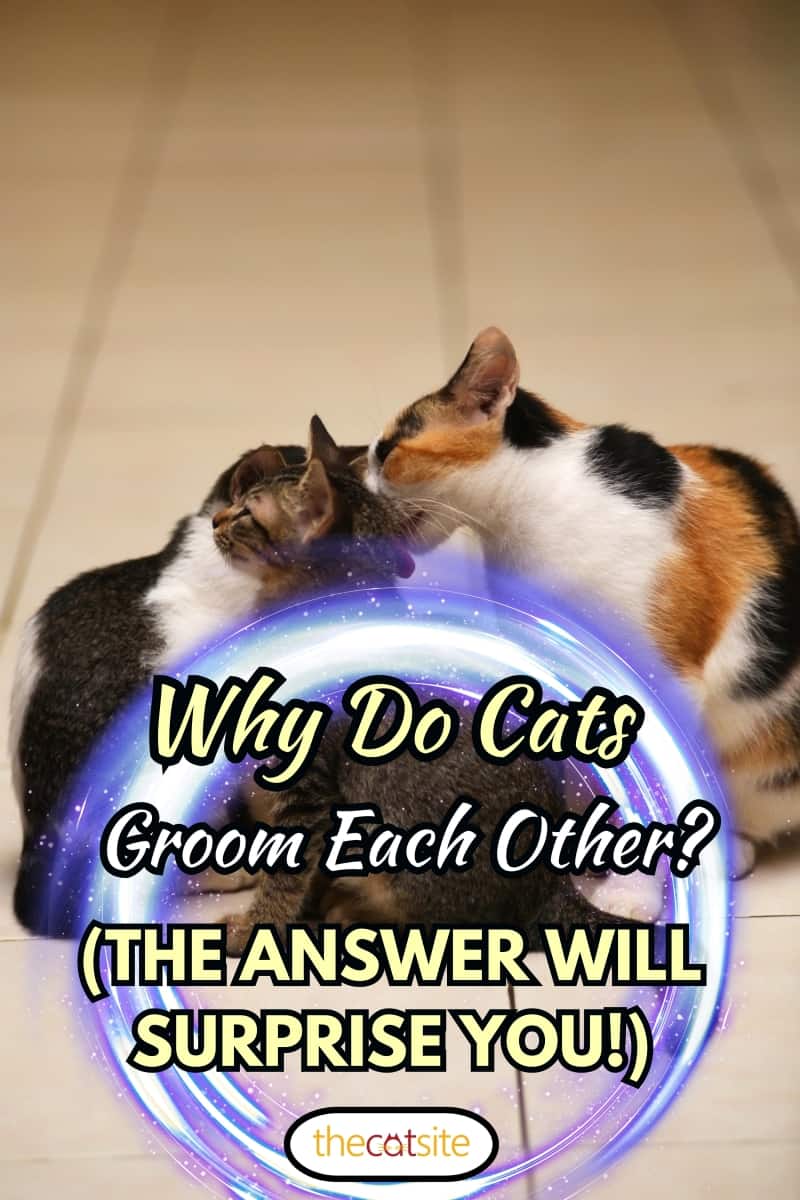

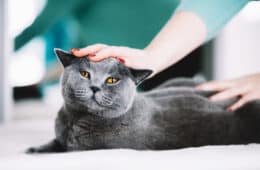
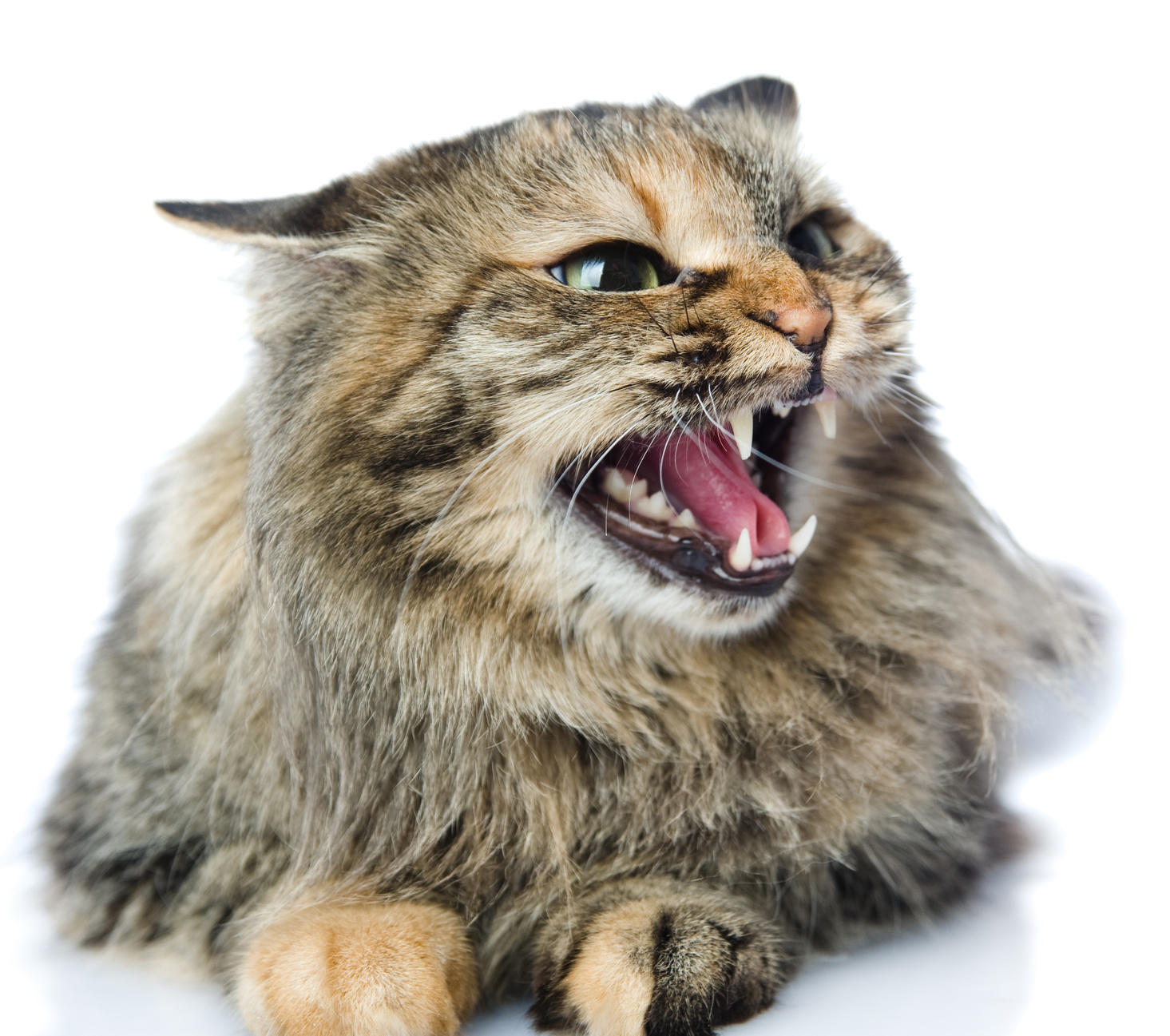
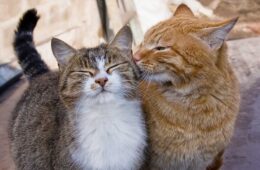
10 comments on “Why Do Cats Groom Each Other? (The Answer Will Surprise You!)”